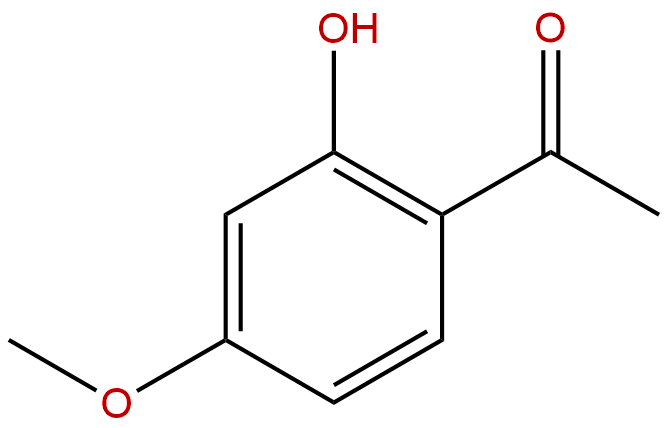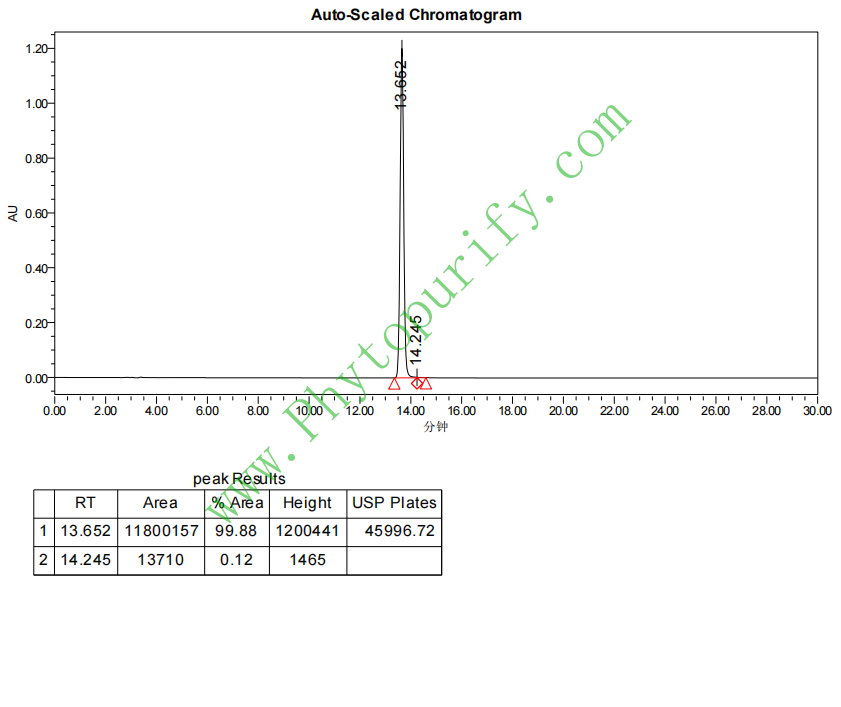
PaeonolCAS No.:552-41-0 |
||||||||||
 |
|
|
||||||||

| Catalogue No.: | BP1057 |
| Formula: | C9H10O3 |
| Mol Weight: | 166.176 |
| Botanical Source: | Paeonia suffruticosa Andr. |
Product name: Paeonol
Synonym name: 2′-Hydroxy-4′-methoxyacetophenone; Peonol
Catalogue No.: BP1057
Cas No.: 552-41-0
Formula: C9H10O3
Mol Weight: 166.176
Botanical Source: Paeonia moutan, Xanthorrhoea arborea, Xanthorrhoea reflexa, Betula platyplylla, Paeonia suffruticosa, Exacum affine, Arisaema erubescens, Dioscorea japonica, Primula auricula and other plants
Physical Description: Cryst.
Type of Compound: Phenols
Purity: 95%~99%
Analysis Method: HPLC-DAD or/and HPLC-ELSD
Identification Method: Mass, NMR
Packing: Brown vial or HDPE plastic bottle
Storage: Store in a well closed container, protected from air and light. Put into refrigerate or freeze for long term storage.
Whenever possible, you should prepare and use solutions on the same day. However, if you need to make up stock solutions in advance, we recommend that you store the solution as aliquots in tightly sealed vials at -20℃. Generally, these will be useable for up to two weeks.
The product could be supplied from milligrams to grams, up to kilograms
Inquire for bulk scale.
Descriptions:
Paeonol , the main active compound of the traditionally used Chinese herb Paeonia lactiflora Pallas, has anti-inflammatory, antioxidant and cardiovascular protective activities;Paeonol inhibits U937 monocyte adhesion to HUVECs stimulated by TNF-α, the inhibitory effect of paeonol on ICAM-1 production may be mediated by inhibiting p38, ERK and NF-κB signaling pathways, which are involved in TNF-α-induced ICAM-1 production, thus, paeonol may be beneficial in the treatment of cardiovascular disorders such as atherosclerosis.[1]
Paeonol exerts its anti-inflammatory and analgesic effects in a rat model of carrageenan-evoked thermal hyperalgesia, the mechanism may be associated with decreased production of proinflammatory cytokines, NO and PGE2 and increased production of IL-10, an anti-inflammatory cytokine in carrageenan-injected rat paws, and attenuation of the elevated iNOS and COX-2 protein expression as well as neutrophil infiltration in carrageenan-injected paws may also be involved in the beneficial effects of paeonol.[2]
Paeonol reduces cerebral infarct and neuro-deficit in rat, suggests it might play a similar role in reducing cerebral infarction in humans, it suppresses and scavenges superoxide anion, and inhibits microglia activation and IL-1beta in ischemia-reperfusion injured rats.
Paeonol can attenuates neurotoxicity and ameliorates cognitive impairment induced by d -galactose in ICR mice, suggests that paeonol possesses anti-aging efficacy and may have potential in treatment of neurodegenerative diseases.[3]
Paeonol has antiproliferation and apoptosis induction in HepG_2 cells, also has significantly growth-inhibitory and apoptosis-inducing effects in gastric cancer cells both in
vitro and in vivo.[4,5]
References:
[1] Nizamutdinova I T, Oh H M, Min Y N, et al. Int Immunopharmacol, 2007, 7(3):343-50.
[2] Chou T C. Brit J Pharmacol, 2003, 139(6):1146-52.
[3] Hsieh C L, Cheng C Y, Tsai T H, et al. J Ethnopharmacol, 2006, 106(2):208-15.
[4] Zhong S Z, Ge Q H, Qu R, et al. J Neurol Sci, 2009, 277(1-2):58-64.
[5] Xu S P, Sun G P, Shen Y X, et al. World J Gastroentero, 2007, 13(2):250-6.
[6] Li N, Fan L L, Sun G P, et al. World J Gastroentero, 2010, 16(35):4483-90.
HPLC of Paeonol
